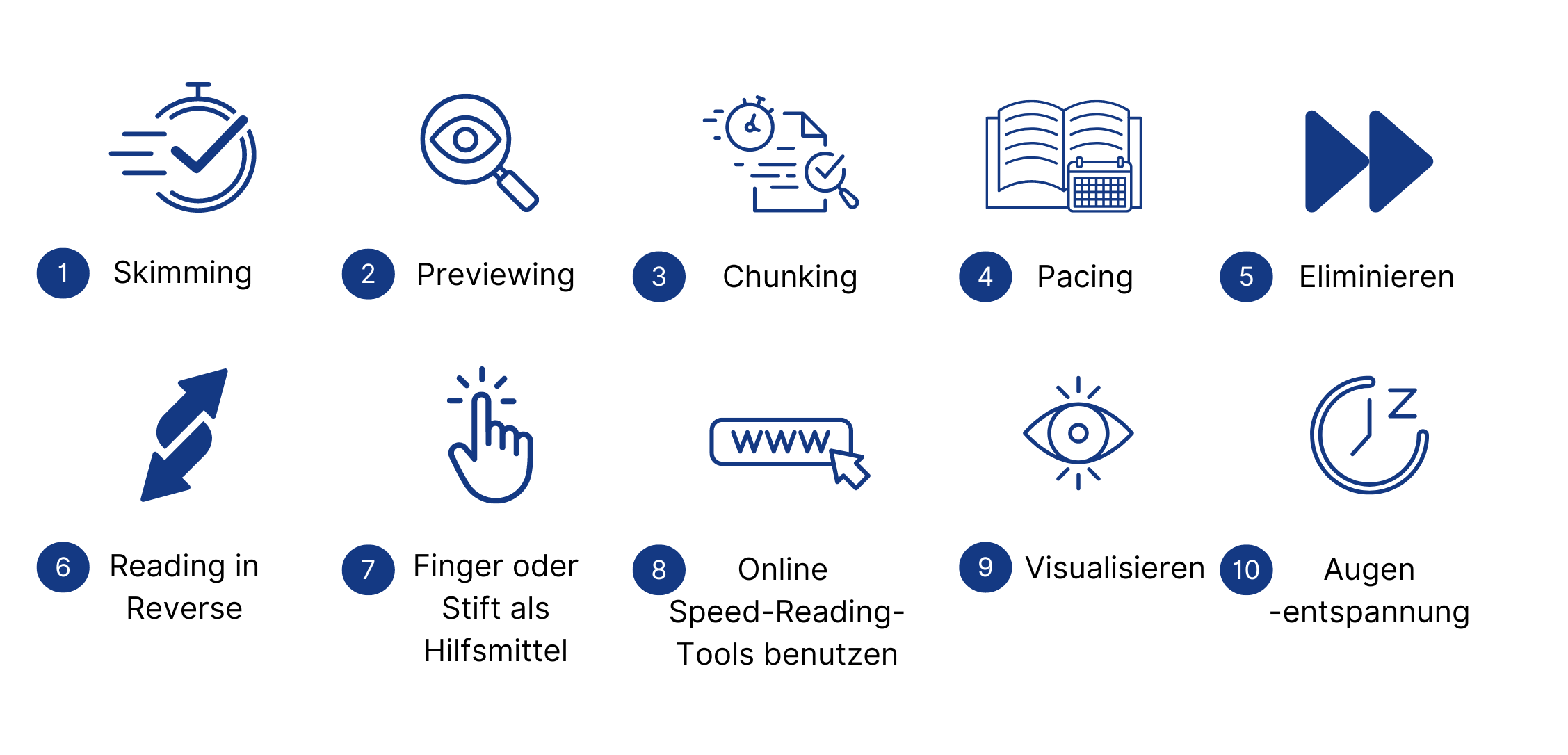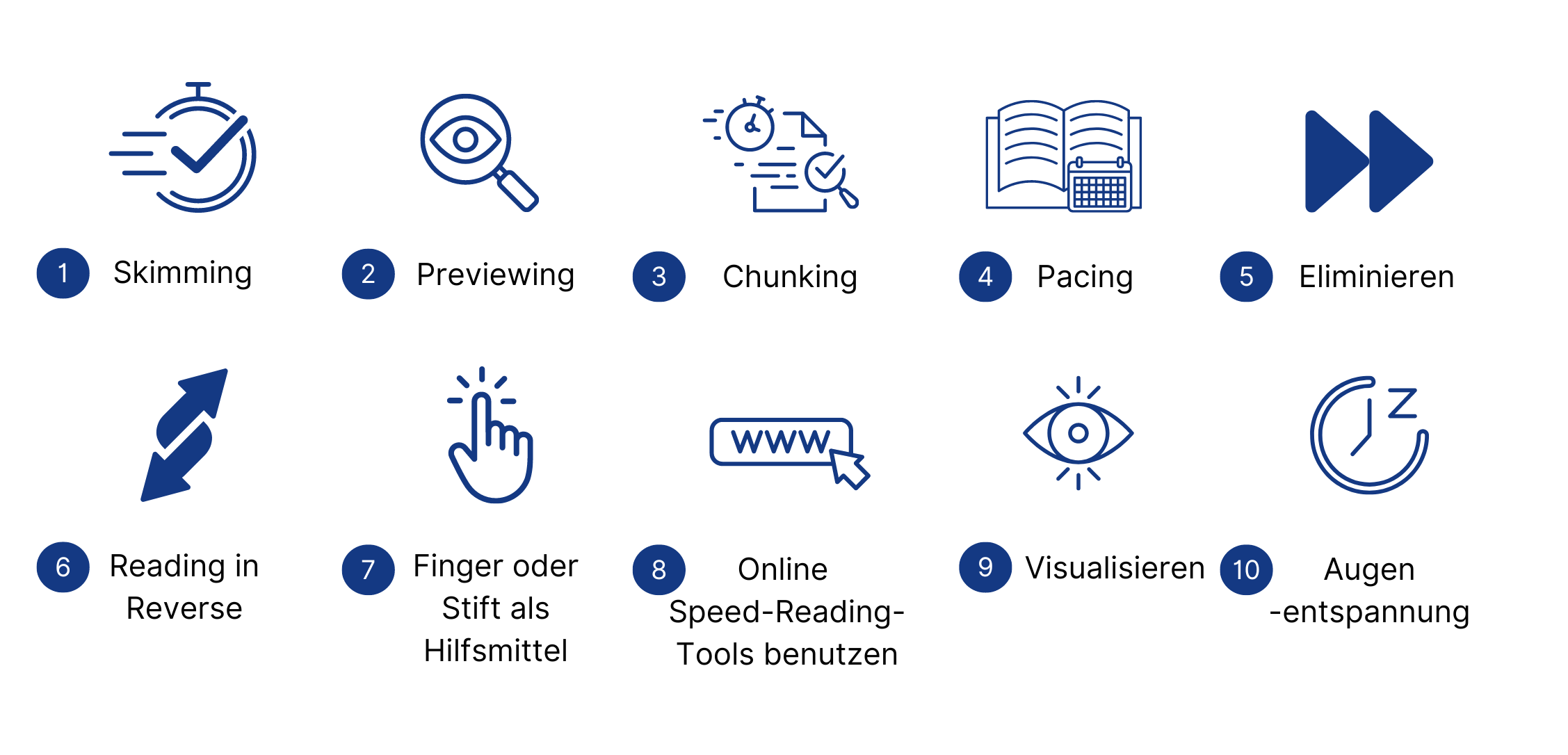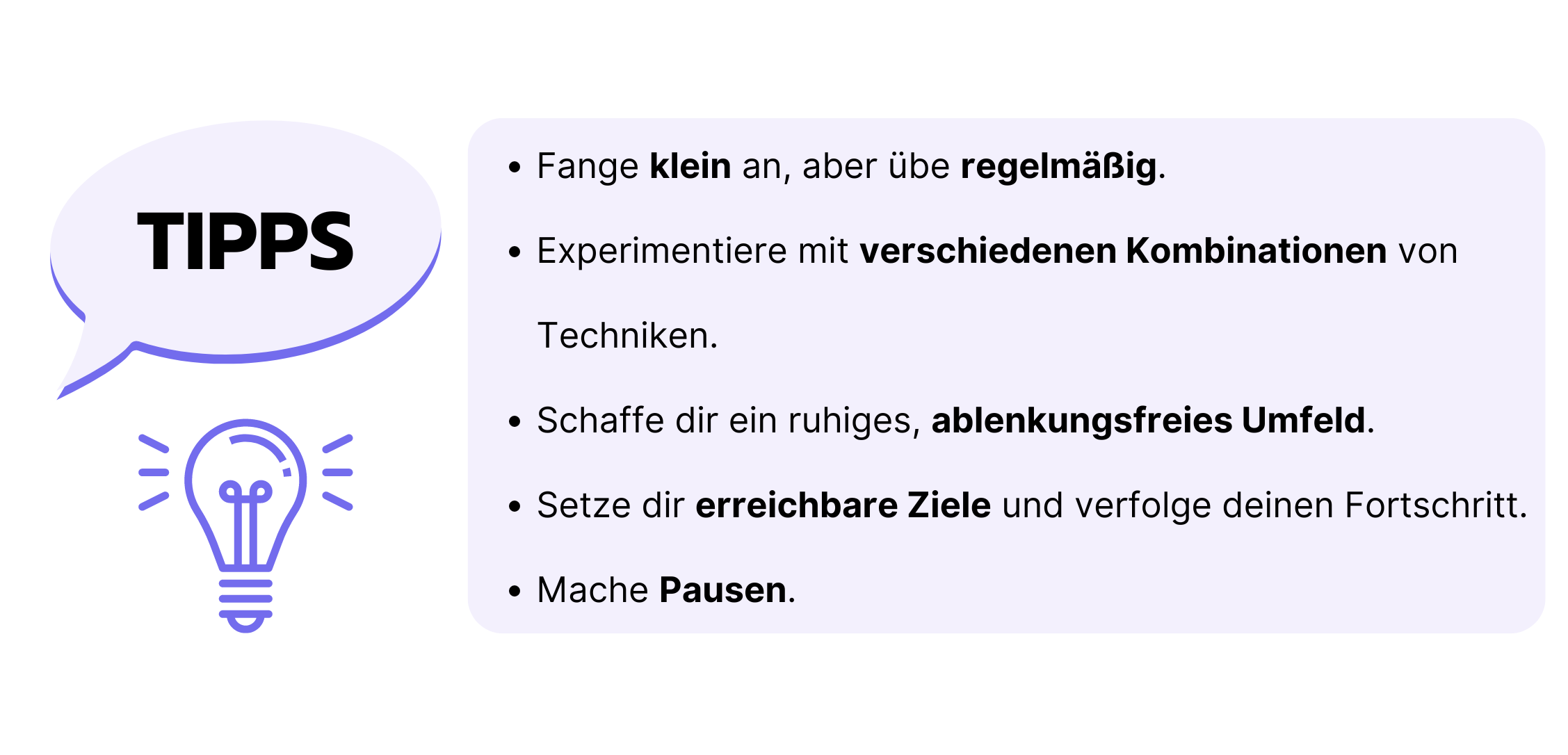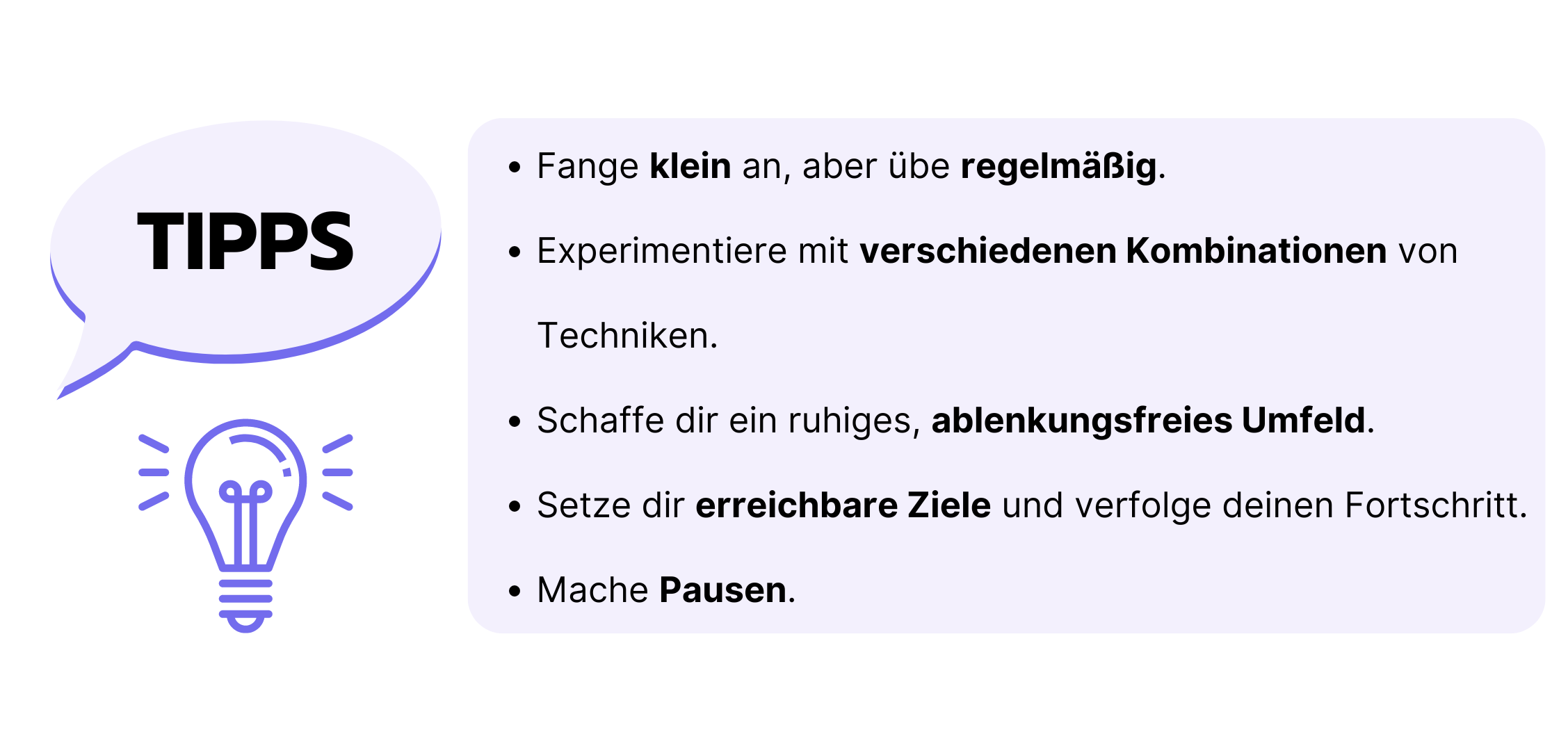Übersicht
Speed-Reading ist eine Lesetechnik, bei der ein Text in einem schnelleren Tempo gelesen wird, ohne das Verständnis zu beeinträchtigen. Ziel des Speed-Readings ist es, die Effizienz und Produktivität zu steigern.
Definition – Was ist Speed-Reading
Speed-Reading ist eine Lesetechnik, bei der ein Text in einem schnelleren Tempo gelesen wird, ohne das Verständnis des Textes zu beeinträchtigen. Dadurch sollen Effizienz und Produktivität gesteigert werden. Dies wird in der Regel durch den Einsatz spezifischer Techniken und Strategien erreicht, mit deren Hilfe Informationen effizienter verarbeitet werden können.
Speed-Reading wird oft mit fortgeschrittenen Lesefähigkeiten in Verbindung gebracht und gilt als wertvolles Hilfsmittel für Studierende, Berufstätige und alle, die große Mengen an Informationen schnell verarbeiten müssen. Es ist besonders nützlich für Personen, die viele Materialien für die Arbeit oder das Studium lesen müssen, oder für diejenigen, die einfach ihre Lesefähigkeiten verbessern möchten.
Wissenschaftlicher Hintergrund von Speed-Reading
Es gibt verschiedene Theorien und Modelle, die entwickelt wurden, um die zugrunde liegenden Mechanismen des Speed-Readings zu erklären. Eines dieser Modelle ist das "Triple-Pass-Reading"-Modell, das davon ausgeht, dass Leser:innen beim Lesen drei verschiedene Verarbeitungsphasen durchlaufen:
- Oberflächenverarbeitung
- Zwischenverarbeitung
- Tiefenverarbeitung.
Bei der Oberflächenverarbeitung konzentriert man sich auf die wörtliche Bedeutung des Textes, während man bei der Zwischenverarbeitung Verbindungen zwischen dem Text und dem eigenen Vorwissen herstellt. Bei der Tiefenverarbeitung hingegen geht es um die kritische Analyse und Synthese der Informationen im Text.
Speed-Reading-Techniken zielen häufig darauf ab, die Oberflächenverarbeitung zu optimieren oder zu umgehen, um schneller zu den tieferen Verarbeitungsphasen zu gelangen. Der Grund dafür ist, dass die Oberflächenverarbeitung zeitaufwändig sein kann und nicht immer notwendig ist, um den Text zu verstehen. Durch die Optimierung oder Umgehung dieser Phase können Leser:innen schneller auf die mittleren und tieferen Verarbeitungsstufen zugreifen, was ein tieferes Verständnis des Materials ermöglicht.
Es gibt verschiedene Methoden, mit denen diese Optimierung oder Umgehung der Oberflächenverarbeitung erreicht werden kann. Diese Techniken können helfen, effizienter und effektiver zu lesen und das Material schneller zu verarbeiten und zu verstehen.
Mythen und Missverständnisse zum Speed-Reading
Es gibt viele Mythen und Missverständnisse rund um das Speed-Reading, die es zu klären gilt. Ein weit verbreiteter Mythos besagt, dass Speed-Reading zu einem Verlust des Textverständnisses führt. Untersuchungen haben jedoch gezeigt, dass man mit Übung und effektiven Techniken die Lesegeschwindigkeit erheblich verbessern kann, ohne dass das Verständnis darunter leidet. Das bedeutet, dass es möglich ist, schneller zu lesen und trotzdem die gelesenen Informationen zu verstehen und zu behalten.
Ein weiterer Mythos besagt, dass nur Personen mit einer natürlichen Begabung für Speed-Reading von diesen Techniken profitieren können. Das stimmt nicht. Manche Menschen haben zwar eine natürliche Fähigkeit, schnell zu lesen, aber jede:r kann seine/ihre Lesegeschwindigkeit durch Übung und den Einsatz effektiver Techniken verbessern.
Es ist auch wichtig zu wissen, dass es beim Speed-Reading keine Einheitslösung für alle gibt. Verschiedene Techniken können einzeln oder in Kombination für verschiedene Arten von Lesestoff effektiver sein, und es ist wichtig, die Techniken zu finden, die für dich und das Material, das du liest, am besten funktionieren.
Letztendlich geht es beim Speed-Reading darum, die Effizienz und Effektivität des Lesens zu verbessern, und nicht nur darum, so schnell wie möglich zu lesen. Durch das Erlernen und Üben effektiver Speed-Reading-Techniken können Menschen ihre Lesegeschwindigkeit und ihr Leseverständnis verbessern, sodass sie Informationen leichter und effektiver verarbeiten und behalten.








